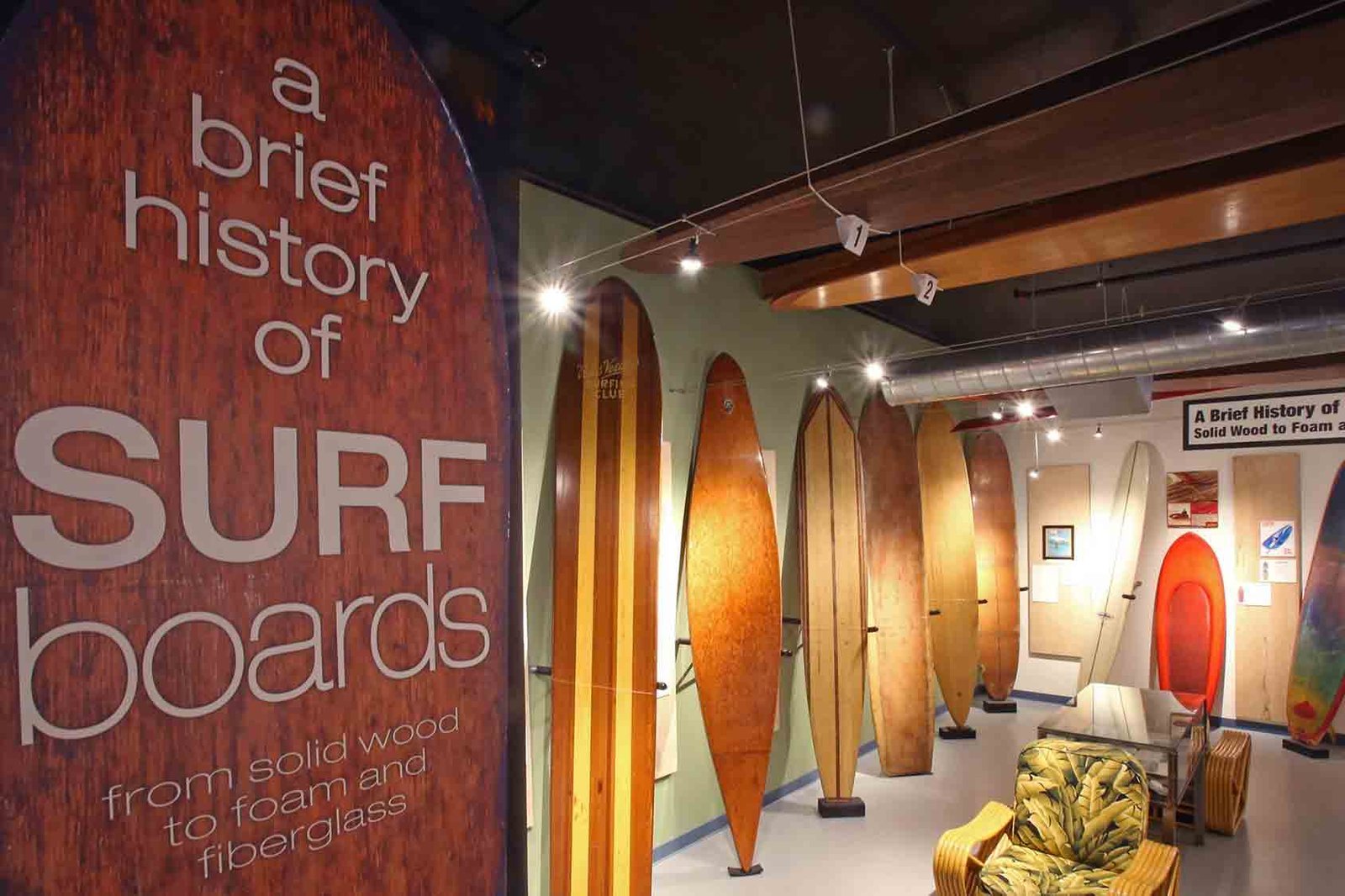In March of 2011 the Museum opened its new 6000 foot space, a state-of-the-art exhibition facility housing an artistic exhibit space and a compelling historical perspective of the surfing lifestyle. It was an arduous task, and even their doubters admit to being impressed.
So how did a scrappy rag-tag bunch of surfers get a million dollar museum put together?
The answer is surprising. “The biggest strength the CSM has is its highly talented board members,” says Jim Kempton, the newly elected President of the Museum. “We have a fabulous architect who designed the interior, an archivist with a PHD in Archive Studies, a couple of marketing gurus, history buffs, construction experts, corporate executives, a top graphic artist, an expert in exhibit presentation, and a PHD who teaches a class in Surf Culture at USD. And they all surf.” So much for the image of surfers as vacuous lay-abouts.
Founded in 1986, the CSM inhabited several locations before moving into its present location at 312 Pier View Way, in the heart of the redevelopment district. The City of Oceanside, who donated the currently occupied space, the Museum found a willing partner to help fulfill the mission of the organization. The mission statement of the California Surfing Museum is displayed prominently on the organization’s website: “The California Surf Museum serves as an international repository and resource center on the lifestyle sport of surfing through capturing, preserving, and chronicling its art, culture and heritage for the education and enjoyment of future generations.”
That appears to be what the Board of Directors intends to achieve. “The CSM collection of 2,000 pieces (including over 125 historically important surfboards) was in need of a larger home,” explains Kempton. “With 20,000 guests annually, we’re the second largest visitor attraction in the area. Surfing and its unique subculture, is a part of California’s rich heritage. People from every corner of the globe visit us.”
The opportunity now exists to build this museum into a premier regional historical institution. However, it is not the pieces alone that will thrive in their new setting but an ability to thematically convey such topics as the historical legacy of California’s surfing culture on the world, the artistry of surf photography and cinema in a comprehensive manner.
“It’s something special,” concludes Kempton. “We feel that the excitement and energy this Museum attracts will provide the magic and the resources we need to fulfill our mission.”

